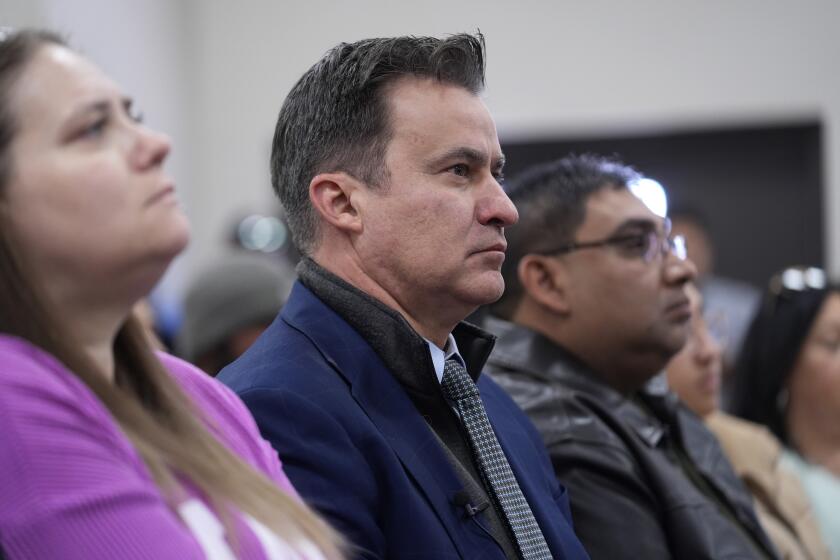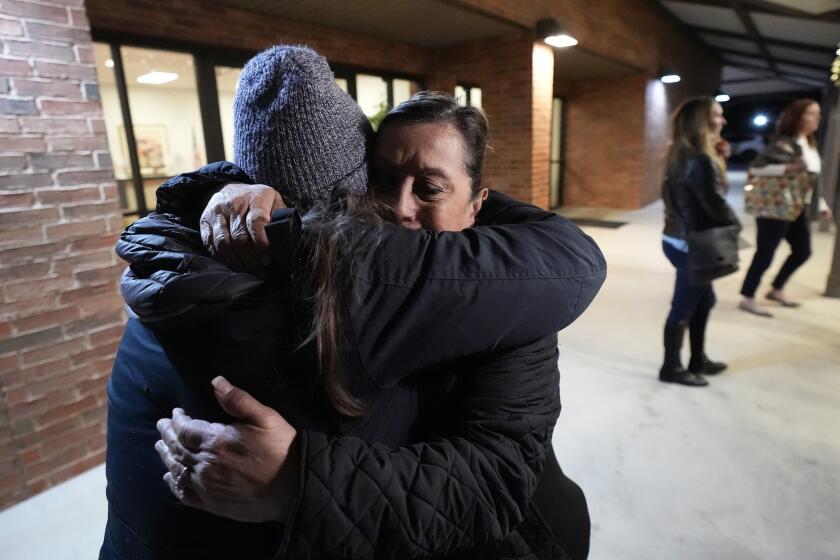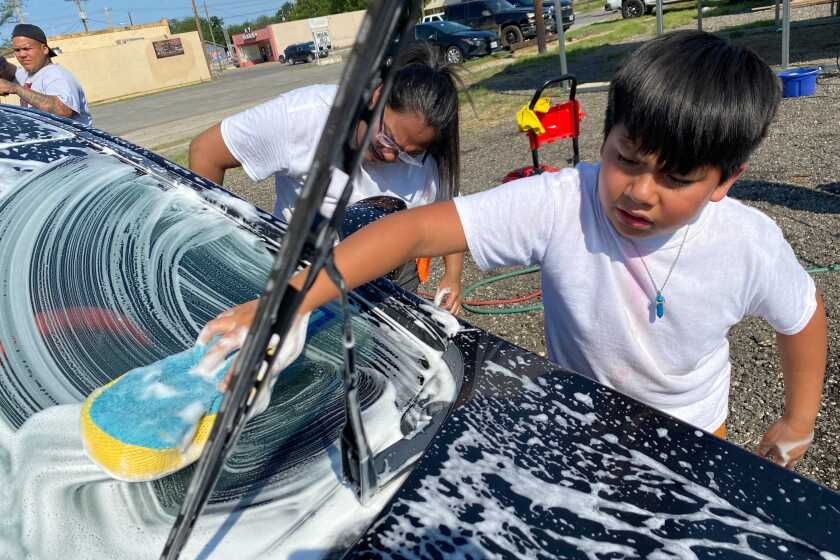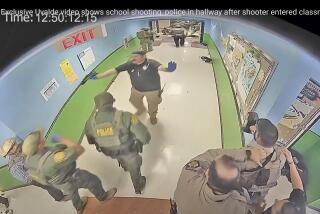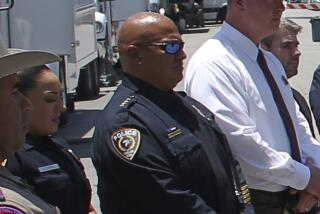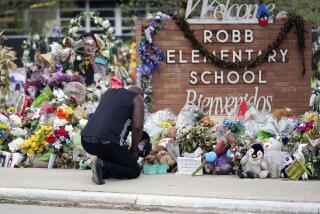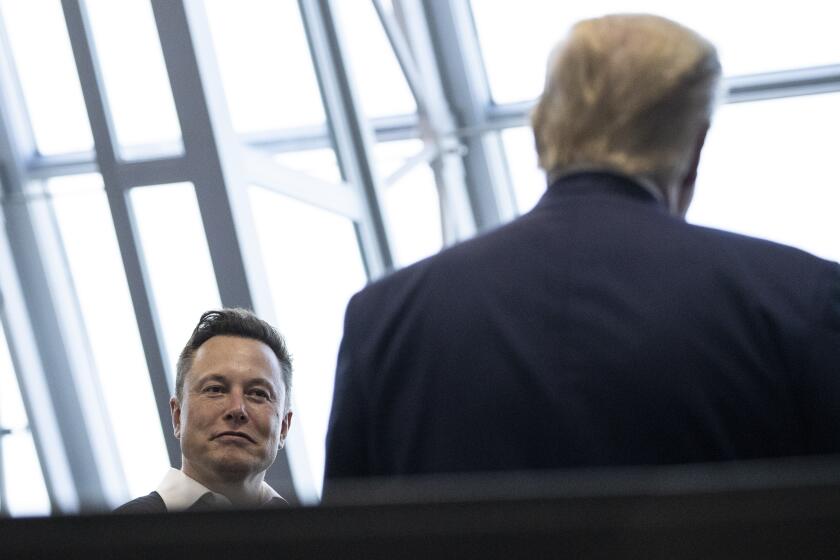Column: The pathetic lessons of the Uvalde school shooting in Texas
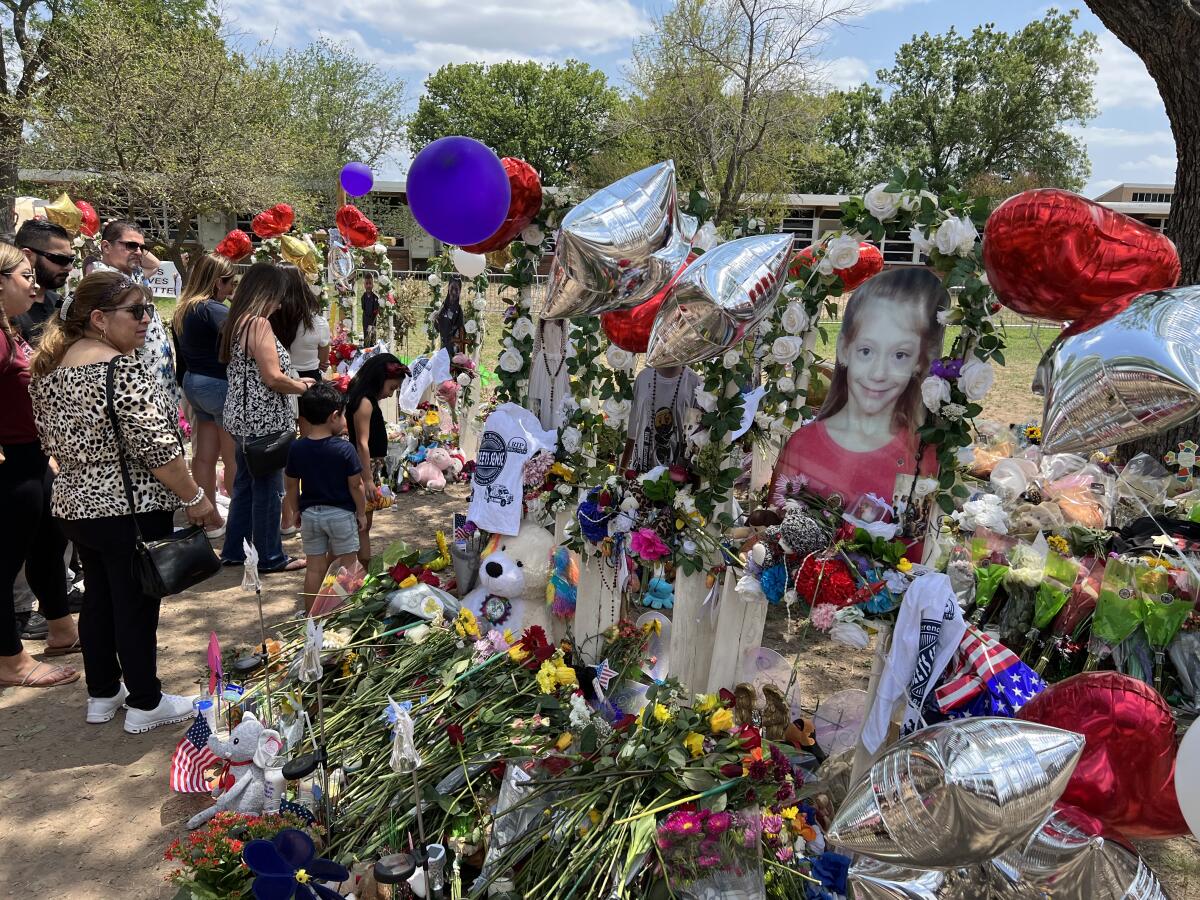
The Justice Department’s report on what went wrong in Uvalde, Texas, nearly two years ago when an 18-year-old gunman armed with a high-powered rifle slaughtered 19 children and two teachers in their classrooms is utterly depressing, and utterly damning.
It will not make anyone who reads it feel one bit better about the grotesque events of May 24, 2022, including the helplessness of the 33 students and three teachers who were trapped in a classroom with the gunman for more than an hour as police officers milled around in the hallway outside.
But it will, one must fervently hope, help other law enforcement agencies avoid the kind of deadly mistakes that were made at Robb Elementary School two days before the start of that year’s summer vacation. For that reason, if nothing else, the report is worth absorbing.
Many who followed the awful events in Uvalde will recall the bumbling police response, the conflicting information from police agency representatives afterward, the anguish of the families who were never given an adequate accounting of the tragedy. Though the Texas House of Representatives issued its own damning report in July 2022, the new reckoning goes into excruciating detail in a much longer, sweeping, minute-by-minute account of the tragedy.
Department of Justice investigators spent many months interviewing 267 people and poring over thousands of documents, photographs, body camera and CCTV footage, training manuals and transcripts.
Families of the children and teachers killed in the Uvalde, Texas, school massacre renew demands for criminal charges over the poor police response.
At more than 500 pages, the document paints a picture of an almost Keystone Kops-like response to the tragedy: There was no proper command structure in place. The local police chief ditched his radios on arrival because, he told investigators, he wanted his hands to be free, so he was left to communicate only with his phone and voice in that hectic and deadly situation.
After several of his officers were grazed with shrapnel as they rushed toward the classrooms where they heard gunfire, the chief ordered them to stay back and evacuate other classrooms rather than engage the gunman. Thus, instead of storming the two joined classrooms where the gunman continued to slaughter children, officers retreated and waited for SWAT officers and specialized equipment to arrive. This was a terrible, unforgivable failure.
As the report pointed out, active-shooter protocols developed after the devastating 1999 massacre at Columbine High School in Colorado require officers to confront and neutralize a threat as quickly as possible. “Everything else, including officer safety,” the report notes, “is subordinate to that objective.” This, in a nutshell, is why choosing a career in law enforcement is an act of courage. You must be willing to rush toward danger, not avoid it.
The Justice Department has issued a highly critical report on the police response to the school shooting in Uvalde, Texas, that killed 21 people.
Among first responders, the report said, communication was abysmal. Rumors ran rampant: Some mistakenly told one another the Uvalde police chief was negotiating with the shooter in a classroom. Some mistakenly believed the shooter had already been killed because they observed what they considered a lack of urgency by officers already on the scene.
Police wasted precious time searching for a key to a classroom that was in all likelihood unlocked, according to the report, but officers would not have known that because, maddeningly, they never tried to turn the doorknob.
Eventually, nearly 400 law enforcement personnel from at least two dozen agencies showed up. No one knew who was in charge; ambulances could not get past police vehicles to access the school. Perhaps most devastating, although officers were on the scene within three minutes of the gunman storming the campus, 77 minutes would pass before he was killed. In that time, police heard him squeeze off 45 rounds.
If we’ve learned anything about mass shootings in Uvalde — and far too many other places in the U.S. — it’s that more guns are not the answer.
Some passages of the report are almost too painful to read. The account of a 16-minute 911 call by fourth-graders trapped in their classroom with the shooter is especially brutal. While officers waited in the hallway, the children pleaded for help: “I don’t want to die. My teacher is dead.” “One of my teachers is still alive but shot.” “There is a lot of dead bodies.”
Had officers executed their jobs, said Atty. Gen. Merrick Garland, who unveiled the report Thursday at a news conference in Uvalde, “lives would have been saved and people would have survived.”
The aftermath of the massacre was bungled as well, according to the report. Wounded children, some with bullet wounds, were put on a bus instead of tended to by medics. Some families were mistakenly told their children were alive.
“The extent of misinformation, misguided and misleading narratives, leaks and lack of communication about what happened,” Garland said, “is unprecedented and has had an extensive, negative impact on the mental health and recovery of the family members and other victims, as well as the entire community of Uvalde.”
“These kids weren’t even soldiers. They died just being kids,” my fifth-grade student says of the Uvalde victims we will honor on Memorial Day.
Garland could not help but address the larger issue we face, the easy availability of guns, which has made mass shootings a near daily occurrence in the United States. According to the Gun Violence Archive, a nonprofit information clearinghouse, there have already been 14 mass shooting events this year — defined as incidents in which at least four victims are shot — three of which occurred in California.
“Our children deserve better than to grow up in a country where an 18-year-old has easy access to a weapon that belongs on a battlefield, not in a classroom,” said Garland to an audience that included weeping Uvalde families. “We hope to honor the victims and the survivors by working together to try to prevent anything like it from happening again, here or anywhere.”
It really is pathetic that we have to put our energy toward developing better responses to mass shootings instead of getting weapons of war off our streets in the first place.
More to Read
A cure for the common opinion
Get thought-provoking perspectives with our weekly newsletter.
You may occasionally receive promotional content from the Los Angeles Times.

